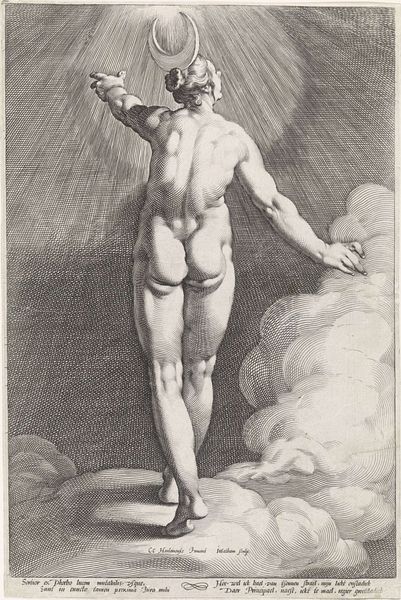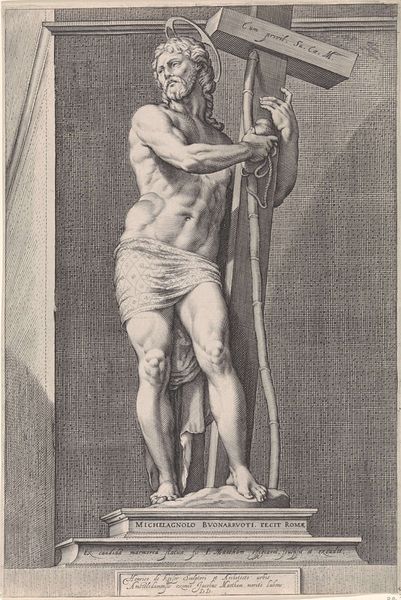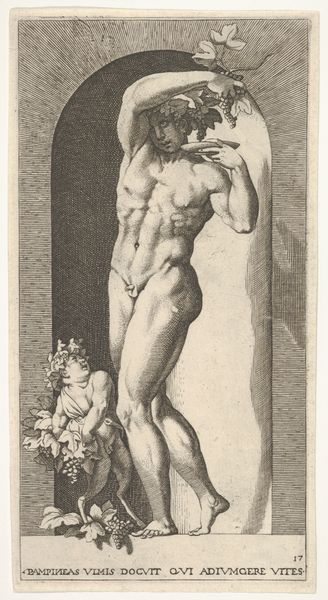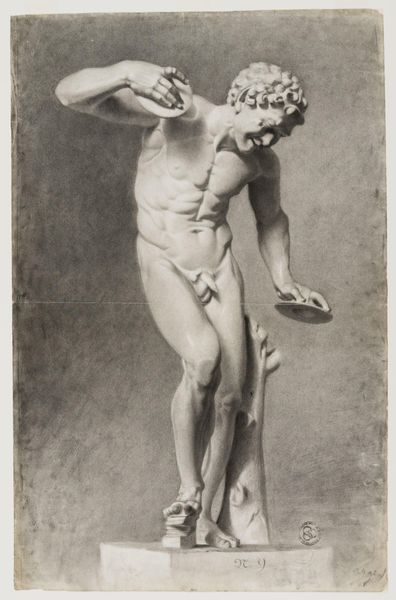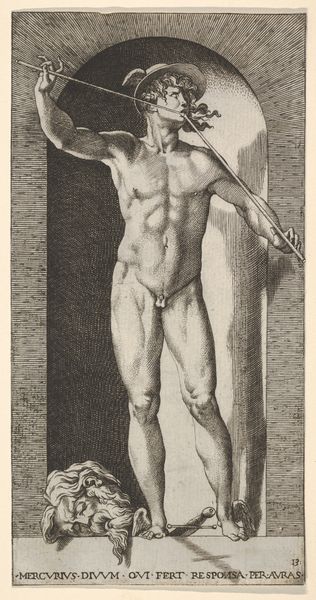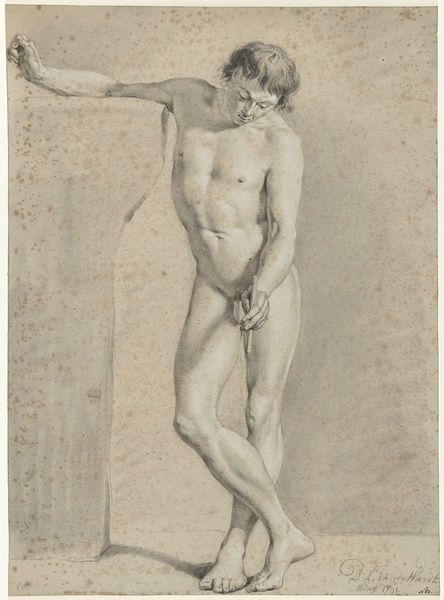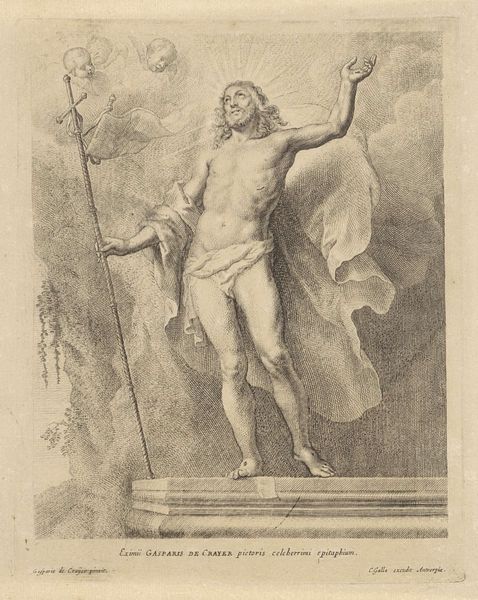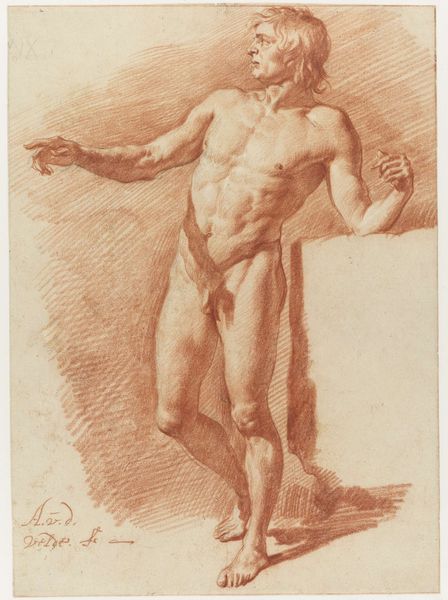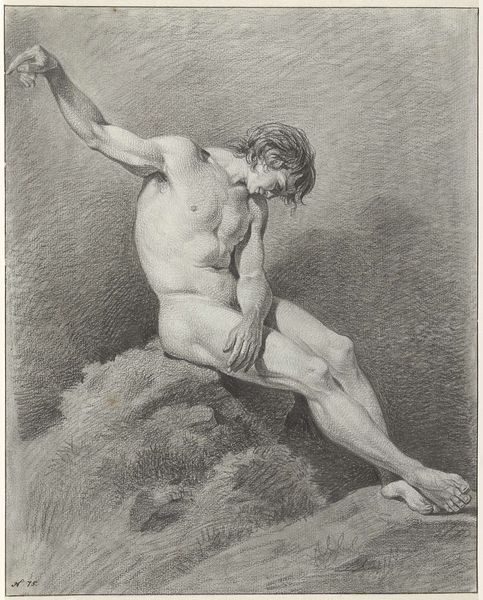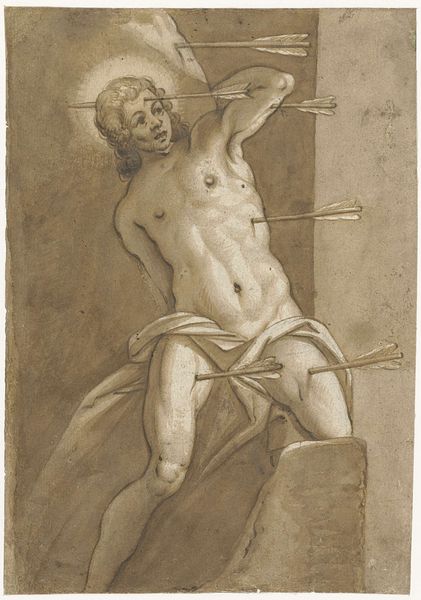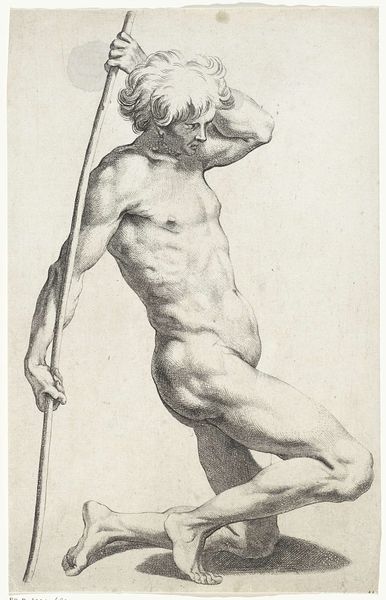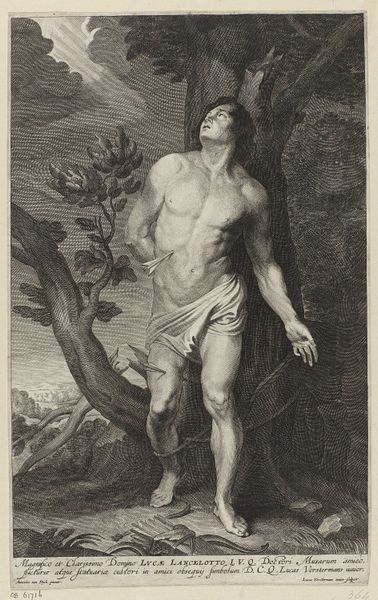
drawing, charcoal
#
drawing
#
charcoal drawing
#
figuration
#
form
#
line
#
charcoal
#
history-painting
#
academic-art
#
charcoal
#
nude
#
realism
Dimensions: height 580 mm, width 437 mm
Copyright: Rijks Museum: Open Domain
Editor: We're looking at "Staand mannelijk naakt, voor een boom," a charcoal drawing by Jacobus Johannes Lauwers, created between 1763 and 1800. It feels quite dramatic. The figure is wounded, arrows protruding from his body, yet he’s standing, almost defiant. What strikes you most about this work? Curator: The tension. Look at how the conventions of academic art are both upheld and subtly questioned. The idealization of the male form, the historical references evoked by the nudity and arrows, yet there’s also an undeniable vulnerability. Consider the potential social and political undertones. The arrows, for example, could symbolize not just physical wounds, but societal injustices, or perhaps even the pain inflicted by rigid social structures on individual freedom. What narrative do you see emerging when considering gender roles? Editor: It does feel like there’s more than just a physical depiction. The arrows could definitely represent a broader struggle, especially given the time period. But how does the figure's pose play into this reading? His hand is on his head, in what seems like a gesture of anguish. Curator: Precisely! That gesture, combined with the classical composition, invites us to examine the drawing through the lens of power and resistance. Who has the power to inflict those wounds, and what systems perpetuate that power imbalance? The pose could be interpreted as a moment of contemplation amidst suffering, a refusal to be entirely defeated. Think about feminist interpretations of similar works—how might we understand this image if the figure were female, for instance? Editor: That really shifts my perspective. Seeing it as a commentary on power structures rather than just a mythological scene opens up so many avenues for interpretation. It's powerful to think of the artist using classical forms to address contemporary social issues. Curator: Indeed. Art isn’t created in a vacuum. It is always in dialogue with its time, reflecting and refracting the complex realities of the world around it. Examining art with an intersectional lens allows us to see beyond the surface and engage with the deeper currents of history and culture.
Comments
No comments
Be the first to comment and join the conversation on the ultimate creative platform.
